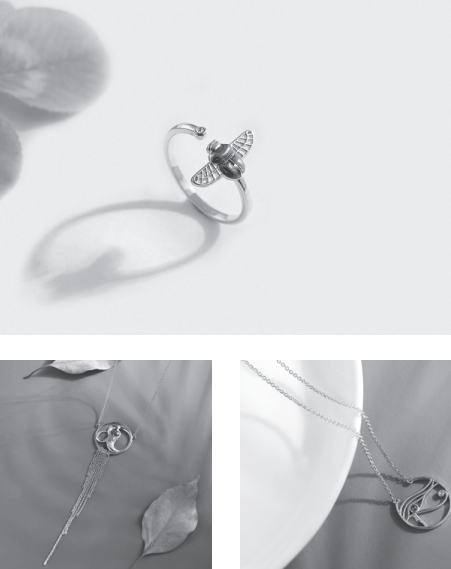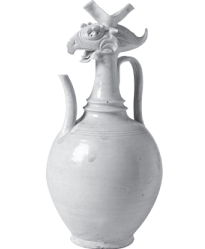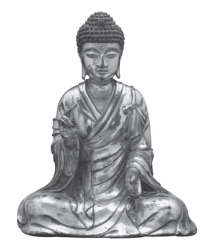WESTERN MUSEUMS TAP CHINESE MARKET
By Liu Xuan (CHINA DAILY) Updated: 2019-12-11 00:00The "cat" is available in black with a colorful Egyptian-style collar around its neck. There is even an earring hanging from its right ear.
This feline is not real, but a 69-yuan ($9.80) protective silicone case for Apple AirPods. The cat is sold in the British Museum's official shop on Chinese e-commerce platform Tmall.
The design was inspired by the Gayer-Anderson Cat, an ancient Egyptian statue, which is one of the most prized treasures at the London museum.
Buyers' comments on the case include: "It protects my device perfectly, and looks so adorable!"; "The design is so cute, I have already become a fan of this cat!"; and "Love this cat-shaped case. Wish I could have the chance to visit the museum and see the real collection."
In the past month, 2,000 of the cases have been sold by the Tmall shop.
During the same period, the shop has sold more than 9,000 folders, which are available in 22 different designs inspired by the museum's collection, at 6 yuan each.
Designs include the Greek sculpture The Discobolus of Myron, a scene from the Egyptian funerary text The Book of the Dead and Japanese painter Katsushika Hokusai's Under the Wave off Kanagawa.
In August, a report by Tmall and the Institute of Cultural Economy at Tsinghua University on new trends in cultural consumption found that sales of products inspired by museum collections boomed last year, and that there is enormous potential to tap the Chinese market.
Over the past two years, sales of cultural products on Tmall alone have risen threefold, with museums' stores on the platform reporting a sixfold rise in such sales during the period, according to the report.
The British Museum said its Chinese customers have a "great interest in culture and the arts, and consumers are hungry for cultural and art-related content".
The museum opened its first online store in July last year, and more than 50 types of products based on its collections sold out within 16 days.
Revenue amounted to more than 1 million yuan during the period and the store attracted about 160,000 buyers in just one month.
Now running for the second year on Tmall, the museum's store has introduced some 1,000 cultural products and has sealed licensing agreements with top consumer brands, according to Craig Bendle, its special projects manager.
"In partnership with Alfilo Brands, the exclusive master licensee for the British Museum in China, we have brands that include fast-moving consumer goods, homeware, cosmetics, accessories and other gifts," he said.
By the end of last month, the number of followers of the online store had reached 1.02 million.
Founded in 1753, the British Museum was the first national public museum in the world, and is one of the United Kingdom's most-visited attractions. Each year, it attracts visitors from around the globe.
However, Bendle said that although many people would love to visit the museum, they may never get the chance.
"The British Museum is the 'museum of the world, for the world', and we hope more and more people worldwide can have opportunities to learn and appreciate global cultures and arts," he said.
In 2016, the museum launched its licensing program with select partners, mainly in the UK and mainland Europe, to develop and promote cultural products. The program then headed to North America and Asia, with that in China becoming the institution's largest such relationship.
Bendle said: "Even though not everyone has the opportunity to visit London in person, they can discover and enjoy our collections via our licensed products or services. By creating wonderful products inspired by the museum's collections, we are able to put a little part of the museum in the hands of these people and thus share our collections with them."
For example, he said people could learn more about the Ukiyo-e art style-which flourished in Japan from the 17th to 19th centuries-through the museum's homeware collection, which includes scented candles and fragrance diffusers.
However, the museum not only sells products from the London store, but also considers localization when entering a foreign country, Bendle said.
The first products launched in the online store comprised imported merchandise from London as well as locally designed items sourced in consultation with the museum.
"We will be looking to develop product ranges inspired by items from across the museum's collections, and will ensure that our products appeal to Chinese consumers," Bendle said. "Offering both broadly appealing product ranges and those specific to a market is an approach that is necessary in all markets."
With the British Museum being the first foreign museum to open an online store, the Metropolitan Museum of Art in New York has followed in its footsteps to attract more attention from China.
Meanwhile, according to media reports, the Winter Palace in St. Petersburg, Russia, the Museum of Fine Arts in Boston, United States, the Van Gogh Museum in Amsterdam, the Netherlands, and RMN, the French national museums organization, are in the process of joining the e-commerce platform.
However, not all Chinese customers accept the idea of promoting foreign museums through the sale of cultural products.
Zhang Haizhou, a strategic communications consultant in Beijing, said he would first visit a museum, and then consider buying interesting products, not the other way around.
Yang Xiaoxiao, 29, who works in the finance industry in Jinan, Shandong province, said she will only buy items from a museum she has been to as a way to remember her visit.
Zhang Kexin, who works in the Beijing office of an international organization, said although she has browsed the British Museum's online store several times, she still prefers buying items on-site.
"After visiting a museum, I always buy bookmarks, postcards or fridge magnets with designs based on the exhibits," she said. "Such products are souvenirs that can help me remember my time at the museum."
In addition to the British Museum, Zhang has visited and bought souvenirs from the Metropolitan Museum of Art and the Louvre in Paris.
"Opening a Tmall store will indeed shorten the distance between foreign museums and their Chinese consumers", she said. "But the fact remains that it is still not a priority for many Chinese tourists to spend a whole day, or even longer, exploring a museum."
"I don't know if this (selling cultural products) is an effective way to attract more visitors."
Touring exhibitions
The British Museum is also trying to seek more diverse ways to attract Chinese customers, such as holding international touring exhibitions.
The most recent, Italian Renaissance Drawings, was staged in Macao from April to June. It showcased 52 works created by 42 Italian Renaissance masters from the 15th to 16th centuries.
The exhibition was also staged in Suzhou, Jiangsu province, in 2016.
The British Museum has already launched channels on WeChat and Sina Weibo, as well as a Chinese-language website to share content with a wider audience in the country.
In May, the prestigious Met Gala in New York welcomed a group of special guests who won the#Salute-ToClassics hashtag challenge via an audience vote on TikTok, the world's leading short-video platform, known in China as Douyin.
The gala, formally titled the Costume Institute Gala and also known as the Met Ball, is an annual fundraising event for the Metropolitan Museum of Art's Costume Institute.
Before the event, the Met launched the hashtag challenge in partnership with TikTok to encourage users' creativity and invite them to display their best imitations of an artwork, or to act like famous art figures. The winners were offered the chance to visit the spring Costume Institute exhibition, Camp: Notes on Fashion.
In addition, the Met opened its official TikTok channel, encouraging millions of users worldwide to discover the museum's exhibitions and its collections.
While some museums are opting to go digital, the Brooklyn Museum is also planning to involve more people from overseas, according to its president and chief operating officer, David Berliner.
Located in the New York borough of Brooklyn, the museum is the city's third-largest and houses an art collection of about 1.5 million works.
It recently opened two new art galleries, including Art of China, whose notable highlights include a Shang Dynasty (16th to 11th century BC) bronze vessel to serve wine, and an iconic Yuan Dynasty (1271-1368) wine jar.
"Our outstanding collections and groundbreaking exhibitions and programs are increasingly popular with travelers interested in our unique perspective of connecting the past to the present," Berliner said.
One of the exhibits, a lacquered leather traveling trunk that dates to the Yuan or early Song Dynasty (420-479), was made in Eastern China but incorporates decorative motifs found in architecture and objects from ancient Persia.
Berliner said it reflects the cultural exchanges that took place when the Mongols ruled both China and Persia, and there is a good chance that the trunk traveled on the Silk Road.
Through the gallery and exhibits, the museum hopes to raise its profile with Chinese audiences to attract more tourists from the country to New York.
Berliner said efforts are also being made to form cross-cultural partnerships, through which the museum can share its world-class collections and special exhibitions by taking them to China.
He said one of the most exciting ways to raise awareness of the museum overseas is by sharing its collections through traveling exhibitions. "It's a great opportunity for us to showcase the depth and quality of our works with people who wouldn't normally be able to see them."
The first exhibition to visit China will be French Moderns: Monet to Matisse, 1850-1950, which is scheduled for next year, according to the museum.
"We are also looking to expand our traveling program to share more of our collections and curated exhibitions in China," Berliner said.
More museums, including the Victoria and Albert in London, are cooperating with other institutions in China to launch special programs or exhibitions.
In 2014, the V&A began a partnership with China Merchants Group to help establish a major museum, Design Society, in the Shekou district of Shenzhen, Guangdong province.
The V&A is home to the world's largest collection of applied and decorative arts and design, as well as sculpture, with a permanent collection of more than 2.27 million items. It was founded in 1852 and named after Queen Victoria and her husband, Prince Albert.
The V&A advises on a project, which includes professional training for Design Society staff members, as well as providing content. The V&A Gallery at Design Society is part of its largest international initiative.
Given current world affairs, Berliner said it seems to be more urgent than ever to use art and cross-cultural exchanges to create understanding and respect among people from different backgrounds and experiences.
"We all benefit when there are expanded opportunities to learn about each other's cultures and experiences, and open ourselves to greater empathy and appreciation of different perspectives," he said, in explaining why the museum wants to explore overseas markets.
 
 The Brooklyn Museum in New York is hoping to tap the Chinese market with sales of products inspired by its collections. CHINA DAILY
The Brooklyn Museum in New York is hoping to tap the Chinese market with sales of products inspired by its collections. CHINA DAILY
 
 
 Visitors inspect collections at the Brooklyn Museum, which is the third-largest in New York and houses about 1.5 million works. CHINA DAILY
Visitors inspect collections at the Brooklyn Museum, which is the third-largest in New York and houses about 1.5 million works. CHINA DAILY
 
 
 Products from the British Museum are selling well in China through its online store on Tmall. CHINA DAILY
Products from the British Museum are selling well in China through its online store on Tmall. CHINA DAILY
 
 
 CHINA DAILY
CHINA DAILY
 
 
 CHINA DAILY
CHINA DAILY
 
 
 
 
 
 
- 'Cooperation is complementary'
- Worldwide manhunt nets 50th fugitive
- China-Japan meet seeks cooperation
- Agency ensuring natural gas supply
- Global manhunt sees China catch its 50th fugitive
- Call for 'Red Boat Spirit' a noble goal, official says
- China 'open to world' of foreign talent
- Free trade studies agreed on as Li meets with Canadian PM Trudeau
- Emojis on austerity rules from top anti-graft authority go viral
- Xi: All aboard internet express











